21 October, Valletta, Malta: The Royal Malta Yacht Club is a living entity. It takes huge pride from its flagship competition, the Rolex Middle Sea Race, and when the competing yachts are away on the course, the clubhouse can feel bereft. Everything changes as soon as the first boat crosses the finish line. The atmosphere energises palpably. An element of relief perhaps, but more significantly it is the opening of the door to sharing each crew’s race experience, both high and low. Black Jack 100 has set the ball rolling this year. Crossing the finish line at 0545 CEST, this morning, the 100-footer captured the line honours trophy that so narrowly eluded the jet black maxi last year.
Remon Vos, the owner, could not have been happier. “Winning line honours at the Rolex Middle Sea Race is very special. It’s a big race and it is a significant achievement for the team, and for the boat.” Skipper, Tristan Le Brun, also took obvious satisfaction in the performance, and a successful execution: “Winning line honours at the Rolex Middle Sea Race is always a great accomplishment in any sailor’s career. For all of us, as a team, it is the first time with Black Jack and we are extremely proud of it.”
In the absence of any other racing maxi of similar size or potency, it was a less competitive circumnavigation than 2024. That should not in any way diminish the result. This is a new crew, put together at the beginning of the year. The yacht, already a sophisticated piece of hardware, underwent a series of heavy modifications over the winter - most visible is the eye-catching livery. This is also a race late in the Mediterranean season, with a reputation for unseating the most proficient of campaigns. Le Brun again, “This boat is highly complex, and to complete the course with 100% success is a triumph. There were no disappointments with this edition of the Rolex Middle Sea Race. It delivered at every step. The winds were challenging at times, we had a lot of rain on the first night, difficult winds north of Sicily and very light airs on the way south. We sailed several hours with someone up the rig to find the wind, so we could stay ahead of Balthasar, who did a fantastic job of finishing not too far behind.”
For both Vos and Le Brun, the Black Jack project is about more than just being first to finish, although after a glance at the boat’s record in 2025 one might question that claim. Setting a new race record at the Gotlund Rund in late June, securing line honours at the Rolex Fastnet Race in late July (beating Scallywag in the process), and breaking its own record at the Palermo – Montecarlo Race in August, are an enviable string of results for any racing maxi. “I think what's really cool on our boat is that we have this very international, versatile crew. We have many nationalities from the four corners of the globe, different cultures, and we focus on the personality and the talent,” said Le Brun. “The crew fly mostly under the radar, but are equally as talented as people that are in the spotlight. They all have achieved many things in their sailing career.” According to Vos: “You want to improve, get faster and better. That's sport and that's one of the reasons why I compete, and especially with this crew who are in it to win, always try to be better, and to fine tune. It takes a lot of preparation, dedication, passion, drive, and energy, and it is beautiful to see how this crew works together. They're very motivated, very dedicated, very serious and passionate, taking pride in what they do. It’s great to see how much talent is onboard. to be part of this project and to see the crew grow. It means the world to them.”
Beyond the performance of the team, both Vos and Le Brun had taken moments to enjoy the world around them. For Vos: “The turn at Lampedusa was special. We were downwind doing 17-18 knots under a sky full of stars.” For Le Brun the most striking thing they encountered was the nature: “We had some beautiful sunrise, really beautiful sunsets. We saw turtles, and we had dolphins swimming next to the boat.”
It was not all relaxation and champagne. Balthasar, shorter by some 9m/30ft, put pressure on Black Jack from the off. Striking the line on the gun, the blue maxi flew like a bolt from a crossbow straight towards the exit of Grand Harbour. Flying an array of headsails, that included an impressive looking BRO, or Blast Reaching Zero, from the North Sails loft, this was one moment in the full public glare that was fully owned by Balcaen’s crew, capably marshalled by the Bouwe Bekking, the veteran round the world sailor and sought-after tactician. It was a tough ask for the less powerful yacht to hang on around the full 606nm course. But the international crew of seasoned campaigners did their utmost to keep the line honours favourites honest.
“Our consistency was the key,” said Bekking. “The Balthasar crew have been together for a long time and many of the team have done round-the-world races, so we know each other’s rhythms. We make our calls early, adapt fast, and trust each other completely. The first 12 hours were brutal — torrential rain, poor visibility, and a lot of trimming in wet gear — but we held it together, kept the boat moving, and stayed patient.”
Balcaen paid credit to the prompt and accurate decision-making: “First out of the harbour, we made an early tactical call to stay north of the rhumb line. That decision helped us avoid a heavy squall that trapped a lot of the fleet. Conditions were tricky — a lot of rain, endless shifts, and plenty of stress. It may have looked easier from the outside, but mentally it was tough. You couldn’t afford to drop concentration for a moment.”
“The contrast near the end was extraordinary. Earlier, in the transition zone north of Pantelleria, we had a call from the Tunisian Coast Guard wondering what we were doing so close to their coast! Coming back from Lampedusa, we had 14–15 knots on the beam and from there it was a fast, exhilarating reach home.”
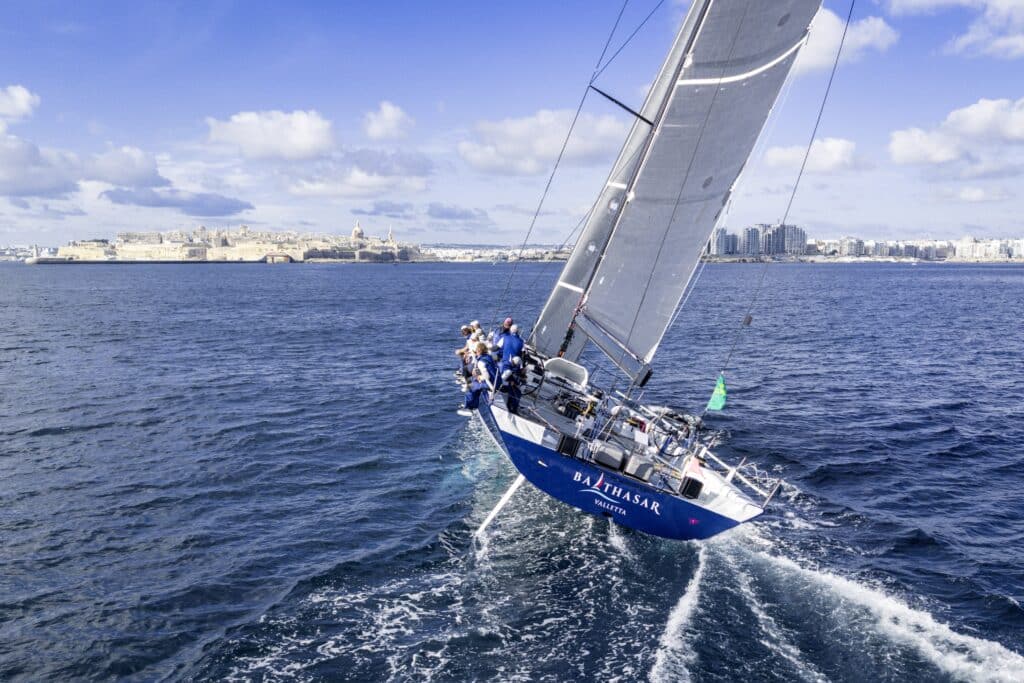
Posting a corrected finish time ahead of Black Jack has put Balthasar at the head of the IRC standings in the battle for overall victory. There is a long way to go with more than 90 yachts still on the course and still in contention. For Balcaen: “It’s an incredible feeling to be back in Malta with a result like this. The Rolex Middle Sea Race is one of the great ocean classics. To even have a chance to win it is an honour. The Balthasar team has worked hard all season, and to finish like this feels very special. Crossing the finish was pure emotion.”
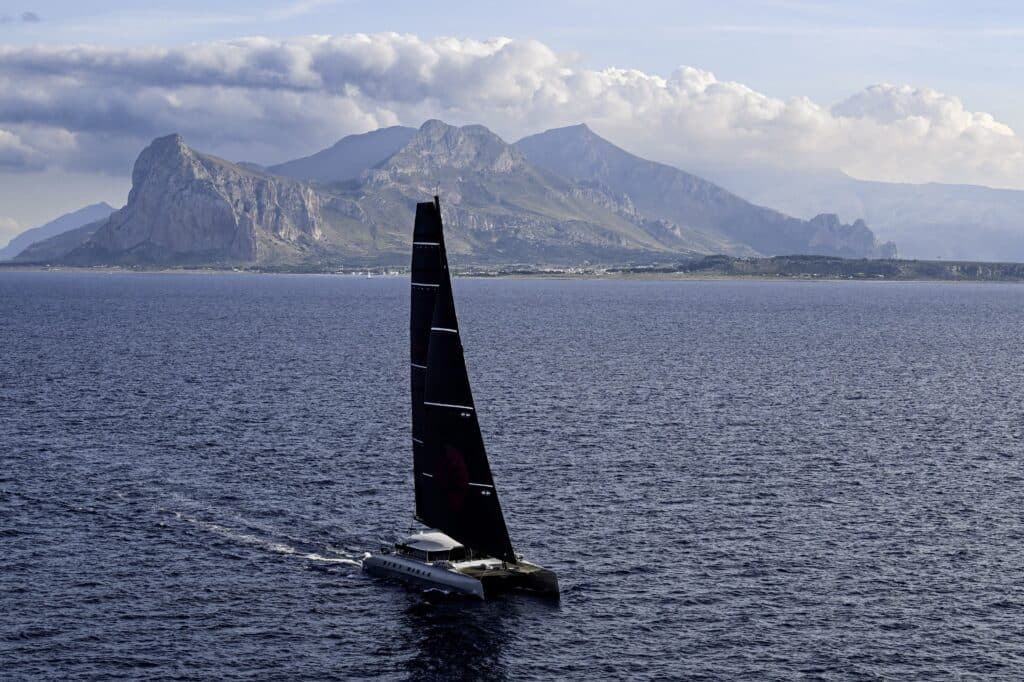
Outside and still racing, the next boat home will be the 84ft catamaran Allegra from Switzerland and skippered by Paul Larsen. At times it has been a difficult race for the large multihull, but finishing first and looking overwhelmingly likely to secure the win in its category under MOCRA, will go a long way to banish memories of retirement in 2018 and any of the challenges encountered this year. Allegra is approaching the South Comino Channel and turn towards the finish and Marxamsett Harbour. She is in company with French Carkeek 54 Daguet 5, racing in IRC2, and Whisper, IRC 1, the J/V62 from Australia on its debut appearance. This pair will be the next monohulls to complete the course.
Paul Larsen reported in earlier today with upbeat news: “It’s the third morning of the Rolex Middle Sea Race and this is exactly what we’ve been waiting for. After paying our dues in the light and lumpy conditions north of Stromboli, Allegra has finally found her stride. This is the weather she loves — where her size, power and balance come into play. The boat is humming, slicing through the waves and building pace all the time. Everyone’s been working hard, sleeping on the sail stack through a bumpy night, and we’ve got a few battle scars and repairs going on below deck, but the spirit on board is fantastic. It’s still anyone’s race until we cross that line — but Allegra is flying, and we’re going to give it everything we’ve got.”
With two boats in the clubhouse, and more on their way, the Royal Malta Yacht Club is in a heightened state of readiness for the days ahead. Maltese hospitality is just as renowned as the complexity and beauty of the course in setting the Rolex Middle Sea Race high in the aspirations of so many sailors.
DAY 4 IRC FORM REPORTS @ 1600 CEST
IRC 1
Balthasar is the provisional winner of IRC 1. Louis Balcaen’s team has beaten Black Jack’s corrected time under IRC and none of the seven boats still racing can better the Mills 72’s time. The battle for the remaining podium places in the big boat class looks like a duel between David Griffith’s Australian JV/62 Whisper and Jens Kellinghusen’s German Ker 56, Varuna VI. The pair of VO65s and the sole VO70 are locked into a private contest, with the Chinese entry Kranendonk passing Pantelleria just nine minutes ahead of the Ocean Breeze, from Austria, with the Austrian entry Sisi in third.
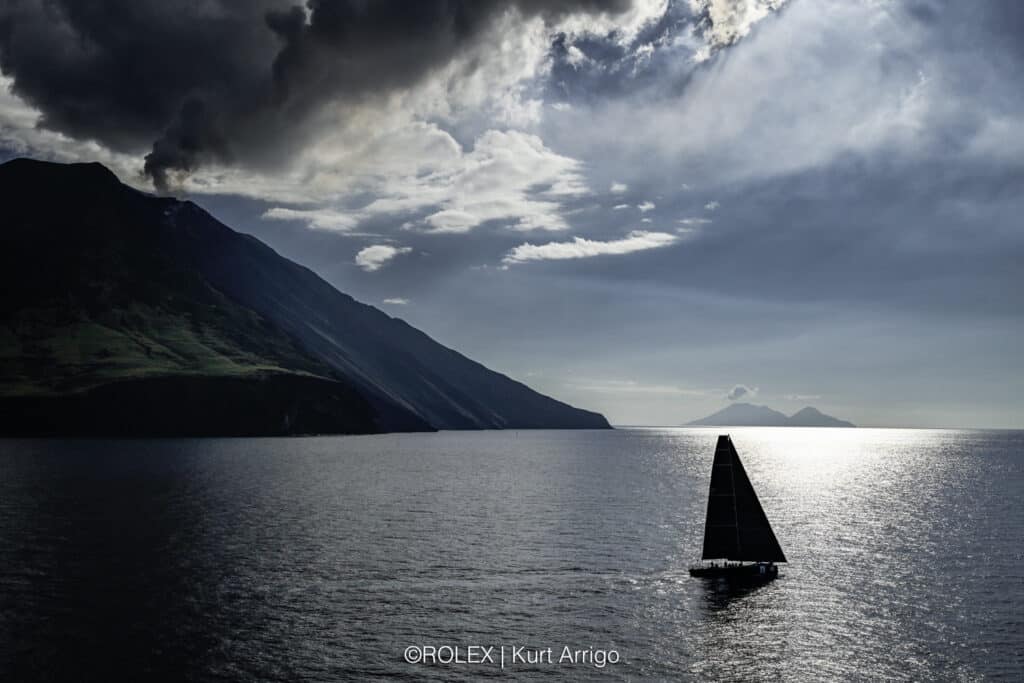
IRC 2
The IRC 2 class leaders have rounded Lampedusa, hitting their top speeds in the race towards Malta. Frederic Puzin’s Carkeek 54 Daguet 5 leads the charge, the French team having lit the afterburners achieving over 17 knots of boat speed. Giovanni Lombardi Stronati’s Italian Botin 52 Django Deer is second on the water and also in its highest gear. The fight is phenomenal. Daguet 5 is currently ranks first in class after IRC time correction, with Django Deer second, but Jon Desmond’s Final Final (USA), Gerard Logel’s Arobas 2 (FRA), Gordon Ketelbey’s Zen (AUS) and Guido Paolo Gamucci’s Cippa Lippa X (ITA) are all in the hunt.
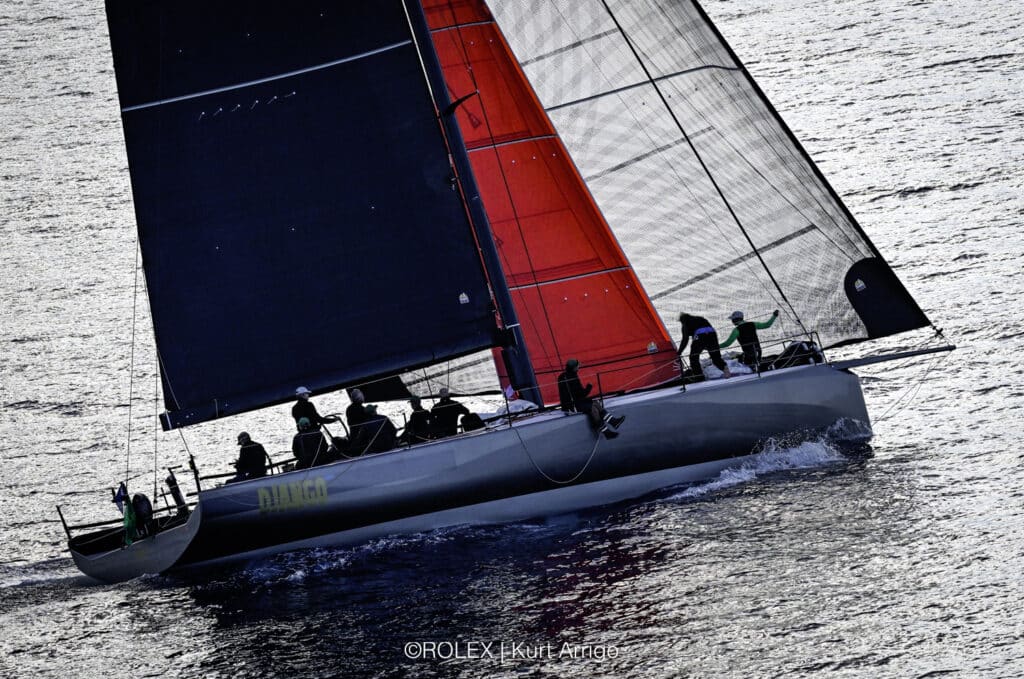
IRC 3
All of the boats racing in IRC 3 have rounded Favignana, with the front six forming a breakaway pack led by Jean Yves Thomas’ French ICE 53 Soleag. Soleag passed Pantelleria at 1300. Four miles astern, three boats are in a real dog fight: Gilles Caminade’s French Ker 40 Chenapan IV, Lee Satariano & Christian Ripard’s Maltese HH42 Artie III and Aaron Gatt Floridia’s Maltese ICE 52 Otra Vez. Chenapan has retained the class lead on corrected time since yesterday, but Artie III is making a push having climbed from fourth to second. The French Neo 430 Roma of Yves Grosjean, Afazik Impulse (Neojivaro) remains still third after time correction.
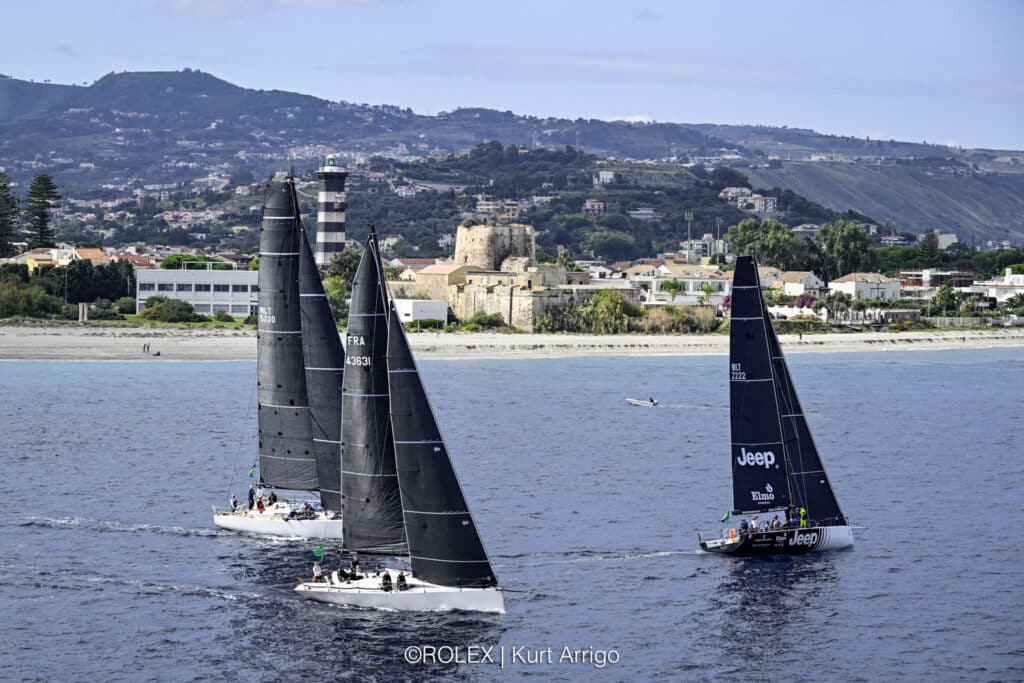
IRC 4
The lead has changed in IRC 4 with the front runners approaching Pantelleria. After Favignana, a pod of five boats went west and hooked into more pressure, including Antonio Giulio Cafaro’s Italian Adria 49 Ars Una, which is now top of the class ranking. Taavet Hinrikus’s Estonian MAT 1220 Nola and Renzo Grottesi’s Italian ClubSwan 42 BeWild also went west and are now ranked second and third respectively. Géry Trentesaux’s French Ker 43 Long Courrier leads on the water but has dropped to fourth after time correction.
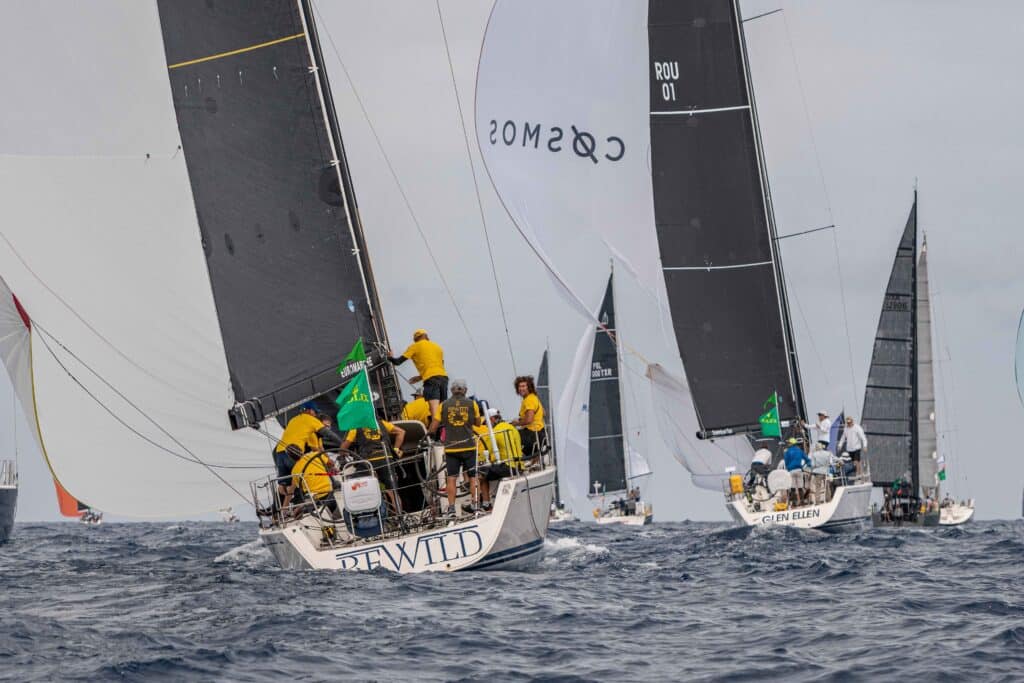
IRC 5
The Podesta family’s Maltese First 45 Elusive 2 has extended their lead on the water to over seven miles and is approaching the island outpost of Pantelleria. However, Gianrocco Catalano’s Italian First 40 Mon Ile continues to hold a fragile lead after time correction, and this excellent contest is expected to run all the way to the finish. Nikki Henderson’s British J/122 Noisy Oyster, over 30 miles behind Elusive 2, is currently ranked third.
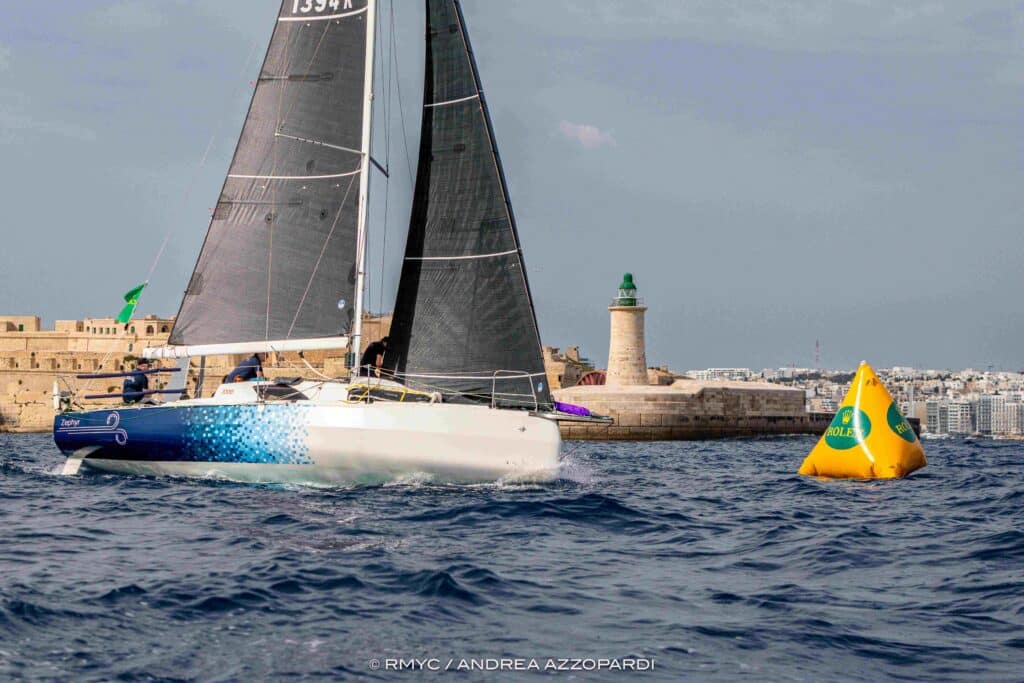
IRC 6
Zephyr retains the lead in IRC 6. Simon Toms’ British Sun Fast 3300 was recorded at clocking over 15 knots after passing Favignana at about 1000 CEST this morning. George Greer’s American entry, the Arcona 380 Kiboko Tatu, is 35 miles behind Zephyr and looks to be ranking second after time correction, well ahead of the fleet behind. That said Kiboko Tatu is being seriously challenged for its podium position by two Maltese boats. The Jarhead Young Sailors on J/109 JYS Jan, skippered by Claudio Bugeja, and Andrew Agius Delicata and Matthew Gabriele’s Reflex 38 Vivace, are both within striking distance. Michele Puggioni’s Italian JPK 1030 Diavolina is also in the mix.
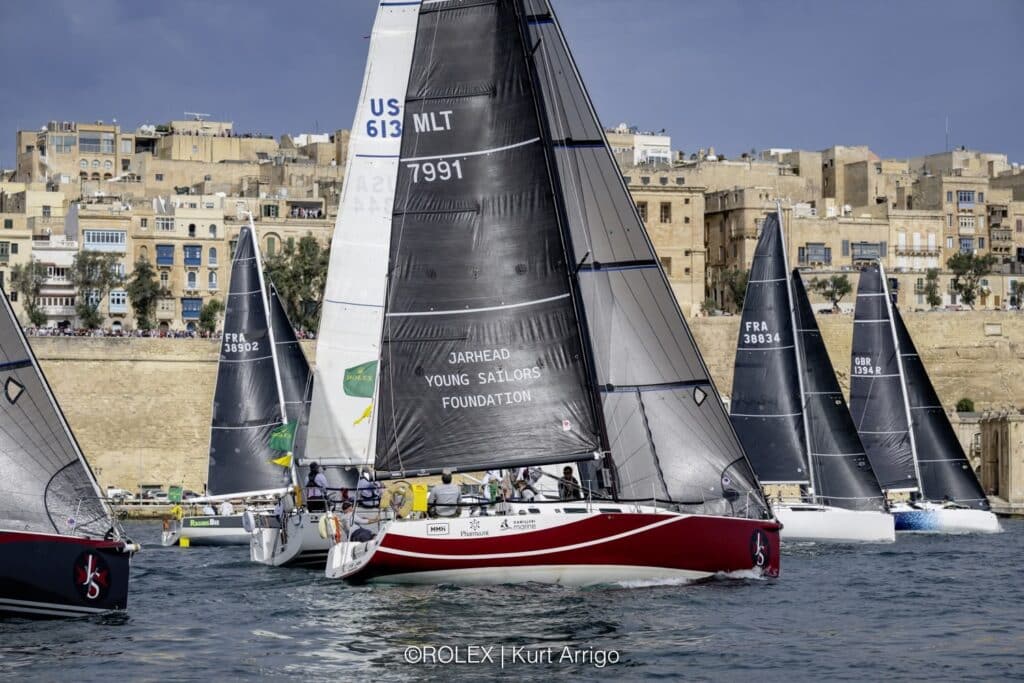
IRC Double-Handed
In the two-handed category, Marco Paolucci’s Italian JPK 1180 Libertine (ITA), racing with Niccolò Bertola, had a superb 24 hours and now has a 35 mile lead on the water and a lead of over 13 hours after IRC time correction. Guido Baroni’s Italian Sun Fast 3600 Lunatika (ITA), co-skippered by Alessandro Miglietti, remains in second, while Eric Muller’s Polish J/99 K’Mena has moved up to third place after time correction.
Multihull
The maxi catamaran Allegra is on the charge having picked up significant wind, and is sprinting towards the finish at over 18 knots of boat speed. Adrian Keller’s Swiss Irens 84, skippered by Paul Larsen, is expected to take Multihull Line Honours at around sunset this evening. Picomole, Aldo Fumagalli’s Italian Rapido 53, has rounded Pantelleria and ranks second some 180 miles from the finish. Matteo Uliassi’s Italian DNA F4 Falcon, skippered by Shannon Falcone, is finally foiling. Falcon is pulling away from Picomole and could well be flying for the next 150 miles!
he Royal Malta Yacht Club thanks Visit Malta and Yachting Malta for their support.